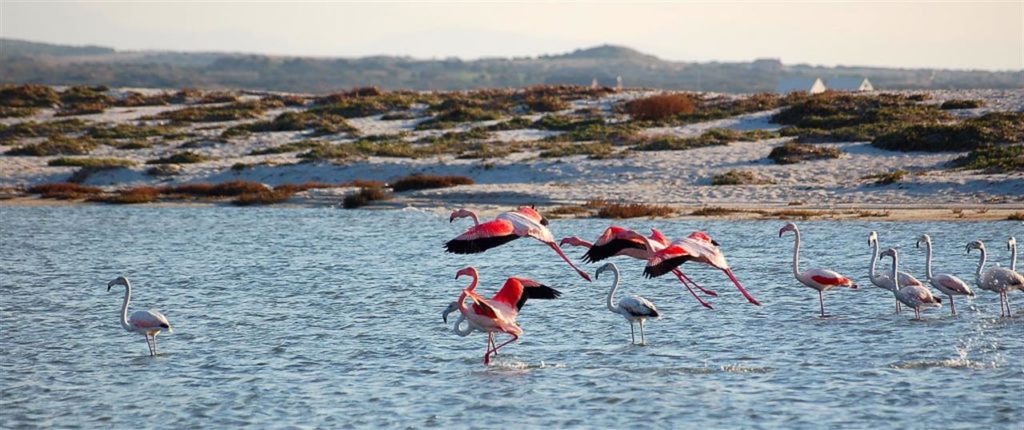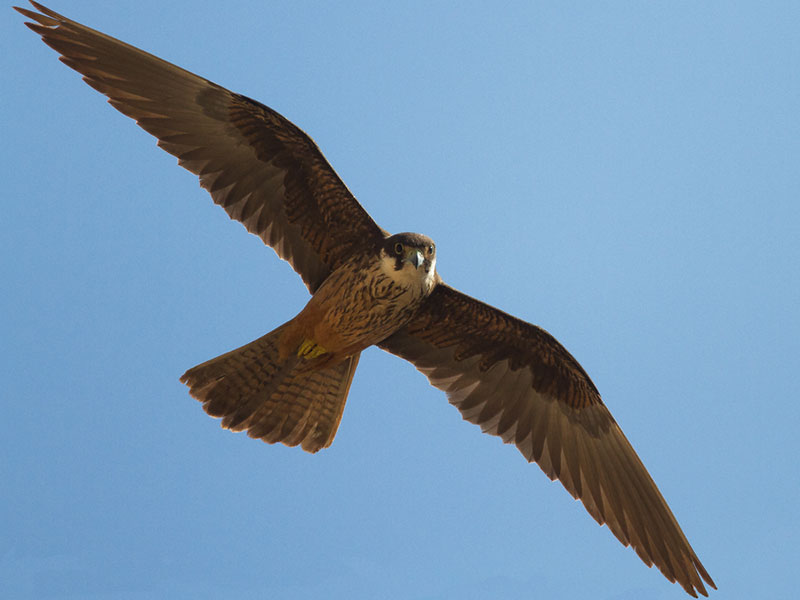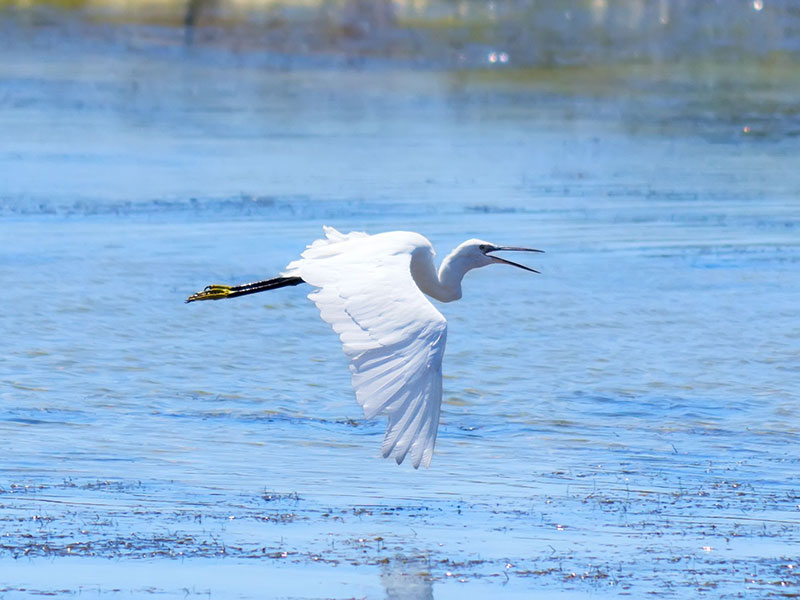For birdwatchers, the province of Oristano is home to most of the approximately 370 species of birds that can be observed in Sardinia (it is 75% of the species that can be observed in Italy), some of which are very rare. In the winter months, the wetlands of the Oristano area are home to several tens of thousands of waterfowl, wintering or walking birds. All in an environmental context that still maintains high levels of naturalness and biodiversity. The most well-known wetland referred to as Cabras ponds includes seabeams, brackish and freshwater ponds, lagoons and lakes dedicated to intensive ichthyogenic breeding, salt marshes and seasonal wetlands.
The Cabras pond is used partly for fish farming and fishing. Due to its size it is difficult to explore in its entirety, but some areas rich in birdlife can be easily reached from the town of Cabras and are partially equipped for birdwatching. Its scarcely brackish waters and its banks almost entirely surrounded by fragmiteto give asylum to podicipeds, ardeids, rams and anatids.
In the direction of San Giovanni di Sinis we find Mistras, a salty pond that in its eastern part is used as salt. The environment is typically that of a sciaphile with well-developed salicornia. As the pond is generally dry, with large areas of bare and uncovered soil alternating with pools of water, the area is particularly suitable for waders.
In the opposite direction between Cabras and Nurachi, we find the ponds of Mari 'and Pauli and Pauli' and Sali which represent the most interesting environments of the entire Cabras area. These are three small bodies of water that make up the eastern edge of the Cabras Pond. Pauli 'e Sali is a flat and low round pond, characterized by large mud surfaces that emerge from the water and give shelter to different species of terns, but also the waders and the herons are well represented in every season. We also recommend taking a look at the countryside areas surrounding the ponds. You can see the Sardinian Partridge, the Calandrella, the Cappellaccia, and if you are lucky you can see the rare Grillaio. During the winter and migrations it is possible to stop the Cranes.
Heading towards the marina of San Vero Milis, you can admire the temporary pond of Sale Porcus, in fact the waters appear during the winter and remain until the spring. In summer, the water evaporates and the pond becomes an immense desert space (350 hectares). The supply waters of the pond are rainwater and no outlet to the sea is absent. The degree of salinity is very high and has created a very particular ecosystem.
This uniqueness, recognized by the Ramsar Convention, has been defended and managed by LIPU together with the municipality of San Vero Milis since 1981. Every year the pond is the destination of over 8,000 flamingos from Africa. There are other species of birds such as: ducks, terns, gulls (including the rosy), herons, waders and the rarest volpoche and knights of Italy. Some seasons have recorded the exceptional presence of cranes and wild geese.





